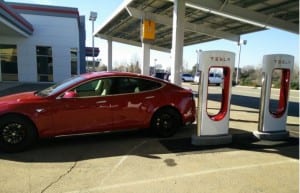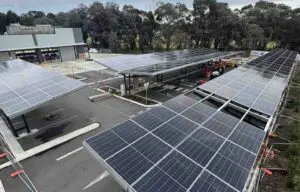 Norway depends on ships for much of its national and international commerce. It also has an extensive network of ferries that cross its many fjords, inlets, rivers and harbors. While we here at Gas 2.0 focus mostly on carbon emissions from land based vehicles, the truth is, ships spew enormous amounts of carbon dioxide into the atmosphere during every voyage. Some estimates suggest one large container ship is responsible for as much atmospheric pollution as 50 million cars (mostly from sulfur dioxide emissions) each year it is in operation!
Norway depends on ships for much of its national and international commerce. It also has an extensive network of ferries that cross its many fjords, inlets, rivers and harbors. While we here at Gas 2.0 focus mostly on carbon emissions from land based vehicles, the truth is, ships spew enormous amounts of carbon dioxide into the atmosphere during every voyage. Some estimates suggest one large container ship is responsible for as much atmospheric pollution as 50 million cars (mostly from sulfur dioxide emissions) each year it is in operation!
Norway takes its duty to be a good citizen among the world’s nations seriously. It has built a national network of renewable energy sources over the past 20 years, so that today it gets as much as 90% of its electricity from hydro, wind and solar power. The city of Oslo recently announced it plans to eliminate 350,000 cars from it central business district by banning cars entirely over the next 4 years.
Now, according to The Maritime Executive, Norway is moving ahead with plans to construct a fleet of plug-in hybrid ships to service its marine industries. In a joint program with the Norwegian government, Oslo-based DNV GL recently launched the Green Coastal Shipping Program, which aims to create the most environmentally friendly vessels in the world. The ships will use LNG and batteries as energy sources.
“We envision a fleet of offshore vessels, tankers, cargo, container, bulk and passenger ships, ferries, fishing and aquaculture vessels, tugs and other coastal vessels, run entirely or partly using batteries, LNG or other green fuels,” said DNV GL’s Narve Mjøs, who is the program director for the Green Coastal Shipping Program.
The first project is a cargo ferry plug-in hybrid for short ocean voyages. The second is a battery powered coastal tanker project. The third project is a hybrid vessel for commercial fishing operations, while the fourth will convert a cargo ship into a hybrid battery and LNG carrier. Converting existing vessels into LNG carriers has been seen as cost-effective to many small operators.
In addition to the low emissions vessels, the program will develop a green port facility that uses less energy than usual and has a minimal carbon footprint. It will make use of electric heavy duty vehicles and cranes and will have dockside charging stations to service the plug-in hybrid ships.
“The shipping industry is very well equipped to lead the way in the green shift. This can contribute to exports of good, future-oriented and environmentally friendly solutions,” says Monica Mæland, the Minister of Trade and Industry.
Source: CleanTechnica. Reproduced with permission.










